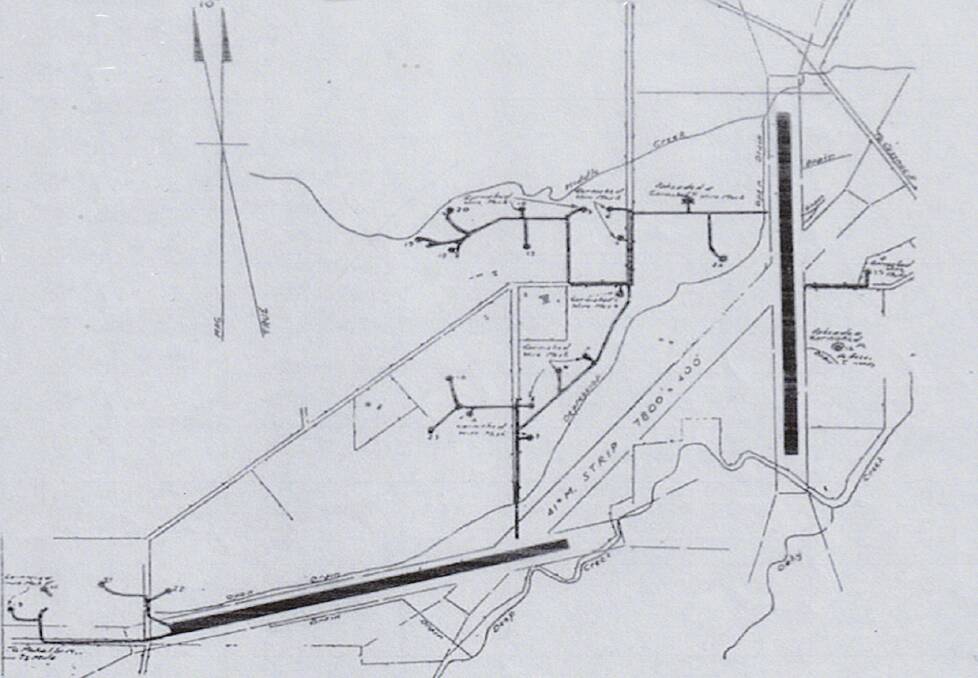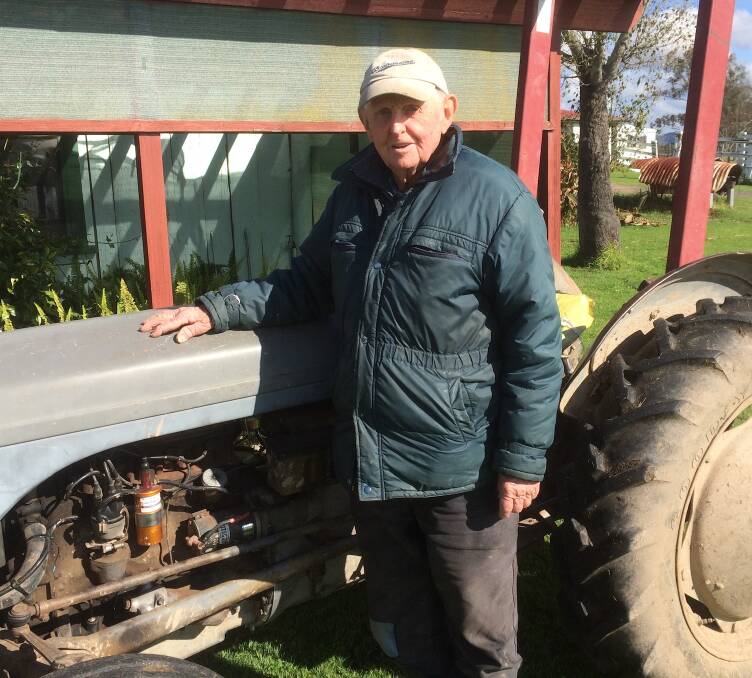
IT'S surprising there are still so many Hunter Valley secrets.
Subscribe now for unlimited access.
or signup to continue reading
It might be the location of a pioneer's lonely bush grave, or an aircraft that crashed in the vast Barrington Tops wilderness.
Or, as in today's case, it's the mystery of a forgotten World War II Pokolbin airfield. "Lost" for 77 years but, rather strangely, some odd relics remain today.
It's a tale from Australia being under siege in WWII when hordes of Japanese troops were on the march in the Pacific and our nation feared invasion.
That's when five Army bases were established in the Hunter, as well as two major air bases set up by the Royal Australian Air Force (RAAF) at Williamtown and Rathmines.
Besides that, there was a short emergency landing ground at Broadmeadow where there were several notorious air crashes.
It was also a time when a series of secret, and not so secret, air bases dotted the Aussie countryside. About 317 apparently, including about 134 in NSW, from Albury to Armidale and from Tamworth to Tocumwal.
As part of this system of secret inland airfields (or parent and satellite aerodromes) in NSW, the Department of Main Roads suddenly built RAAF Station Pokolbin in 1942.
The Commonwealth airbase was on land apparently owned by McWilliams vineyards, but today we know it as Cessnock Airport after the site was renamed in 1948 and then given to Cessnock Council in 1992.
This civil airport, six kilometres north of Cessnock itself, was in the news again only a fortnight ago.
After being closed for five months for an extensive upgrade, there was some controversy around the airport's reopening with warnings expressed about the runway surface.
That's not our concern today, however. It's all about what some locals have called the history of the airfield's unknown second runway.
For the record, Pokolbin's wartime aerodrome officially had two runways, each 5000ft by 160ft (1524m by 49 metres) but supposedly side by side.
The Pokolbin RAAF base was proposed to then have satellite aerodromes at Glendon (near Elderslie) for aircraft maintenance, plus Rothbury and Weston, although these last two sites don't seem to have been built.
Most people today recognise Cessnock Airport for its north-south runway. But, according to an RAAF map drawn in 1942, marked "secret" and held in the Australian War Memorial, Canberra, there was actually a now unknown diagonal east-west airstrip.
Some older Cessnock residents still remember it well after it was abandoned in 1945 at war's end.
As one resident 'Bob' told me recently: "The building foundations were there when I walked over the site ages ago. There were at least a dozen remnants. There were things like the concrete channels left from the old ablutions blocks because there was no sewer, only septic.
"The remnants are dispersed over a wide area. There's also camouflage wire still up in the old ironbark trees. It's been left there for the best part of 80 years and what's left of the base of the communications tower.
"People were surprised when heavy earth-moving equipment turned up to create the WWII aerodromes. There was even a vineyard there, but it disappeared.
"And the gravel to pave the runways was transported all the way from Bulga, would you believe.
"The land was cleared south down to the junction of Oakey Creek and Pokolbin Creek. And, in doing so, the contractors were blamed for destroying a sacred Aboriginal Bora ground around there, but it was the 1940s and the war was raging," Bob said.

"The two diagonal runways built were also connected with a long taxiway.
"The workforce just turned up with bulldozers. It was all part of the war effort to defend the country. Nobody was compensated as far as I know," he said.
"When these airfields had reached their use-by date at war's end, they were abandoned, but still obvious there in the mid 1960s.
"The site of the existing Cessnock/Pokolbin airstrip, then became a local drag strip. People learned to drive there.
"The other bit, the east-west runway, was used for grazing."
Weekender has long tried to get access to this property, but there were complications including the sale of the land and a recent death.
But there's at least one surviving witness to the construction of the wartime Pokolbin airstrips in 1942, and his name is George Magennis, 94, of nearby Nulkaba. That's where he saw his first bulldozer when he was 14 years old in the area originally known as "The Crossroads'. The name disappeared when an airstrip truncated access along the local Briars Road.
George had been in Cessnock with his mother when a DMR work crew delivering sawn timber turned up looking for directions to the Pokolbin site. He obliged, and got a front-row seat to the building of the runways and installation of a two-masted wireless station.
"I also remember the big aircraft hangars there, all camouflaged. One was a big barn structure with an open side. The other had netting all over it.
People were surprised when heavy earth-moving equipment turned up to create the WWII aerodromes. There was even a vineyard there, but it disappeared.
"The east-west runway site was later sold off. There's grapevines there now," he said.
The missing Pokolbin airfield is by no means unusual, however. In November 2020, I discovered Woy Woy's giant 1942 airstrip, now disused and disguised as Trafalgar Avenue running north-south through suburbia. Who would have guessed?
Only some red gravel from the original airstrip recalls the era.
But the final word should go to Kimberley 0'Sullivan, local studies librarian at Cessnock library.
"There have actually been three airfields in the Cessnock local government area (LGA) over the years," she said.
"But the present Cessnock Airport was completely re-designed after the Second World War to what you see today.
"And in 1948, the authorities called on Cessnock Council to take down any signs advertising Pokolbin airfield and that in future it could only be called Cessnock Airport."
O'Sullivan said the overall history of the former Pokolbin airfields was covered in the library's 2018 exhibition, Come Fly With Me.
During research, it was also discovered that famous Aussie aviation legend Bert Hinkler had landed at an earlier Cessnock airfield, but had to stay there several days with mechanical problems.
"And as for that (missing) east-west Pokolbin airstrip, you can still see it on Google's satellite views," she said.
WHAT DO YOU THINK? We've made it a whole lot easier for you to have your say. Our new comment platform requires only one log-in to access articles and to join the discussion on the Newcastle Herald website. Find out how to register so you can enjoy civil, friendly and engaging discussions. Sign up for a subscription here.

